Maker HEIRLOOM TECHNOLOGY

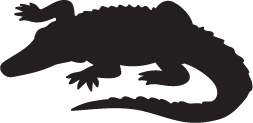
LIVING FREE IN THE FLORIDA EVERGLADES
I’ve been living outdoors for the past few months, mostly in the swamps and rivers of Florida. Fisheating Creek, southwest of Lake Okeechobee, is particularly stunning: white sand, cypress knees, cabbage palms, perfect cool sunny weather, and very few mosquitoes when I was there in March.
Living outdoors is great. I wake up just before sunrise, have lots of energy all day, and sleep well at night, unlike the caffeine-vampire seasonal-affective jetlag meltdown that afflicts most of the people I know back in the land of progress.
I brought plenty of work with me. My laptop is full of more PDFs than I can read and the digital remains of my last five computers. I’ve got a few thousand trip photos and Xeroxed notebooks of projects I need to finish drawing.
Too bad swamps are so damn interesting. My laptop resides in a urethane rubber envelope inside a gasketed, hard backpack. When I get paranoid, I put that inside a dry bag. I have desiccant but don’t usually use it. I bag my toys up when they’re warm, and condensation hasn’t been a problem.
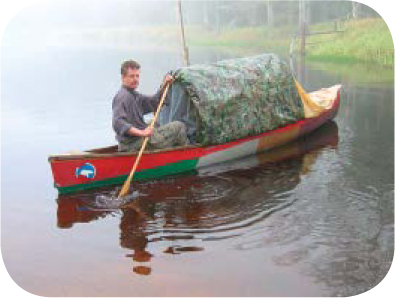
Photography by Tim Anderson
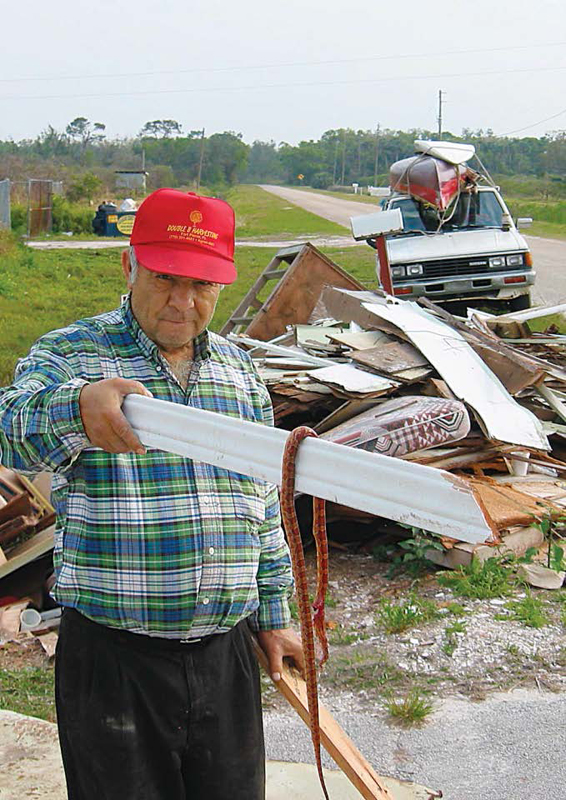
Ruben Cano in Ft. Pierce gave me some old-growth lumber from his flattened house and a dead corn snake for dinner. My mom says these gentle snakes are the best ones for toddlers to pet, but alas, it was killed for resembling a Copperhead.

Canoe set up for a good night’s sleep.
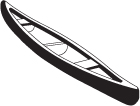
CANOE AS HOME
I outfitted my canoe like a Chinese sampan. That consisted of taking out the center thwart and putting bent willow hoops for a little covered-wagon roof over it. With so many alligators around, I was glad to have something more solid than a tent to sleep in. I have different little roof tarps to choose from depending on the weather.
For a cool, dark den to use my laptop computer, I use the aluminized tarp. If I don’t want to distract people from the scenery, I toss a camouflage tarp over that.
Here’s the sampan canoe with a bug net (at right), which the locals call a “skeeter bar” because that’s where the bugs go for a drink and a good time. I sleep in the middle in a chaise lounge folding chair.
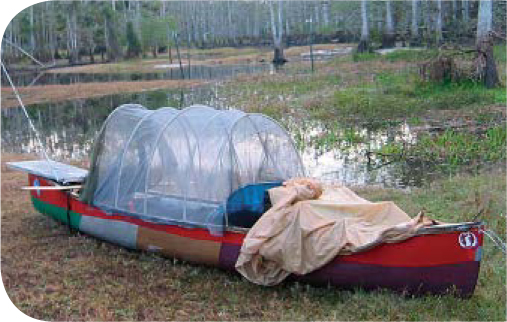
Solar panels and fishing rod are at the bow. I have two Solarex 20-watt (peak) solar panels from the MIT flea market and a few 6- and 12-volt gel cell batteries retired from emergency room lighting systems. These batteries can run my lights, computer, sewing machine, and inverter full of radio and telephone wall warts for longer than I can stand it.

FOOD ISSUES
American hobos developed this fine cooking stove (near right). This one is made from a 3-liter olive oil can. There are air intake doors at the bottom on three sides. I kept cutting and folding down the intake door flaps until there was no charcoal in the ashes. The top is cut with an X and the flaps folded up with a vertical crease to support the pot. The pressure cooker uses very little fuel. It makes it hard to burn food because the bottom doesn’t dry out. I’d boil a dozen eggs and steam-bake bread in a bowl atop them at the same time. Seawater has the perfect salt content for making bread dough. I carry an aluminum license plate to put under the stove when I’m worried about killing the grass. I looked forward to distilling drinking water like the old-time gladesmen did, but I never got thirsty enough to get around to it.
A simple method made possible by plastic is to run the steam into a plastic bag for a condenser. (above, bottom right). I tried it with a rice cooker and it worked great. All the salt stayed in the cooker and the fresh water collected in the bag in the tub. The bag was such an effective condenser that the steam hardly puffed it up at all.
I caught a Brown Hoplo armored catfish with my cast net. Delicious flaky yellow meat, simple bone structure, but it’s got plenty of bones on the outside.

These are South American “sucker fish” kept in aquariums to clean the glass. When they escape, they thrive in the wild, breed, and get quite large. They can’t be caught on bait because they feed so low on the food chain. They’re not a mercury hazard for the same reason. I removed its tiny entrails full of algae and cooked it over the hobo stove in a pressure cooker.
For vegetables, I sprouted lentils or mung beans (above right) in a quart yogurt tub with vent flaps cut in the lid. Soak two cups of dry beans for a day, discard the water, and rinse the sprouts every day. Eat as many as you want, and the next morning the tub will be overflowing again. Sprouts are very important to yachties, Mormons, and anyone who wants to live well on stored food. The book Sailing the Farm (out of print, Google for a used copy) is full of sprouting tips and other ingenious methods for living well on a boat with very limited resources.
The book Gladesmen: Gator Hunters, Moonshiners, and Skiffers (upf.com/Spring1998/simmons.html) explains how Everglade frontiersmen distilled swamp water. They used a 5-gallon can for a boiler and a coil of 3/8" copper tubing for a condenser. The condenser coil was cooled in a second 5-gallon lard can full of water.
(ISBN: 0813015731) Glen Simmons and Laura Ogden. $24.95 Cloth. 5¾x8½. 224p. index illus.
